Abstract
To study impaction versus impingement for the collection and recovery of viable airborne microorganisms, three new bioaerosol samplers have been designed and built. They differ from each other by the medium onto which the bioaerosol particles are collected (glass, agar, and liquid) but have the same inlet and collection geometries and the same sampling flow rate. The bioaerosol concentrations recorded by three different collection techniques have been compared with each other: impaction onto a glass slide, impaction onto an agar medium, and impingement into a liquid. It was found that the particle collection efficiency of agar slide impaction depends on the concentration of agar in the collection medium and on the sampling time, when samples are collected on a nonmoving agar slide. Impingement into a liquid showed anomalous behavior with respect to the sampling flow rate. Optimal sampling conditions in which all three new samplers exhibit the same overall sampling efficiency for nonbiological particles have been established. Inlet and collection efficiencies of about 100% have been achieved for all three devices at a sampling flow rate of 10 liters/min. The new agar slide impactor and the new impinger were then used to study the biological factors affecting the overall sampling efficiency. Laboratory experiments on the total recovery of a typical environmental microorganism, Pseudomonas fluorescens ATCC 13525, showed that both sampling methods, impaction and impingement, provided essentially the same total recovery when relatively nonstressed microorganisms were sampled under optimal sampling conditions. Comparison tests of the newly developed bioaerosol samplers with those commercially available showed that the incorporation of our research findings into the design of the new samplers yields better performance data than data from currently available samplers.
Full text
PDF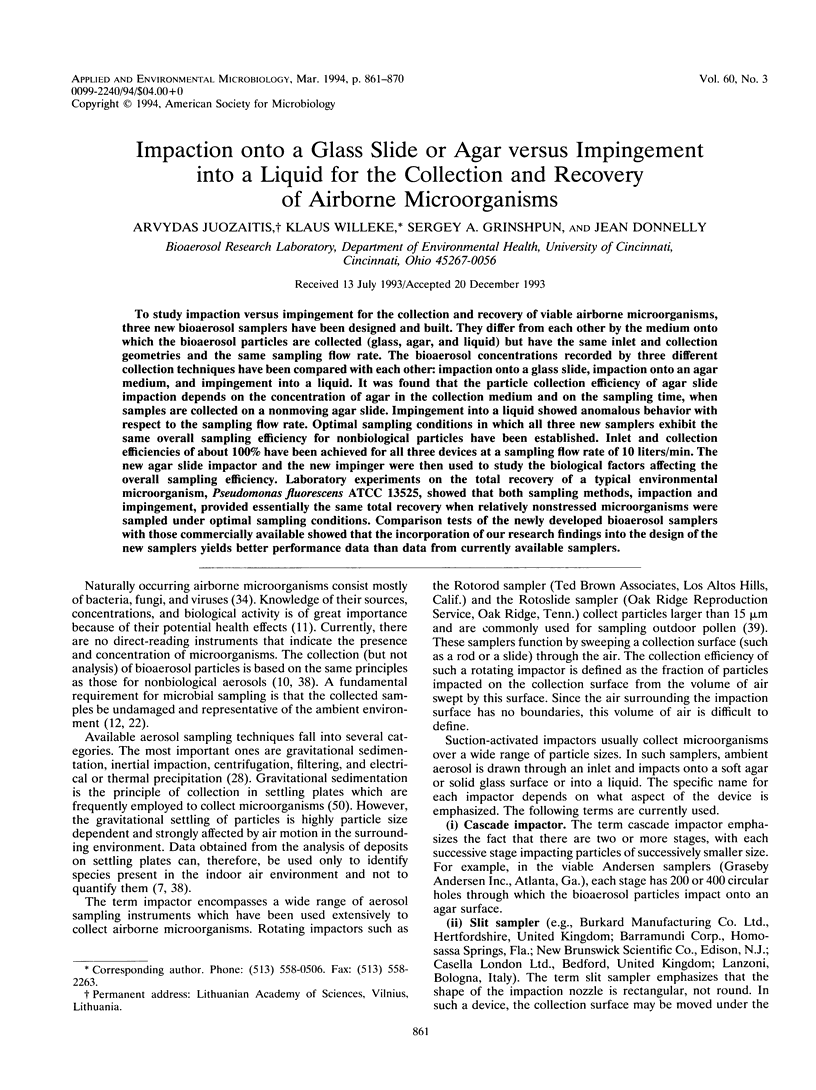
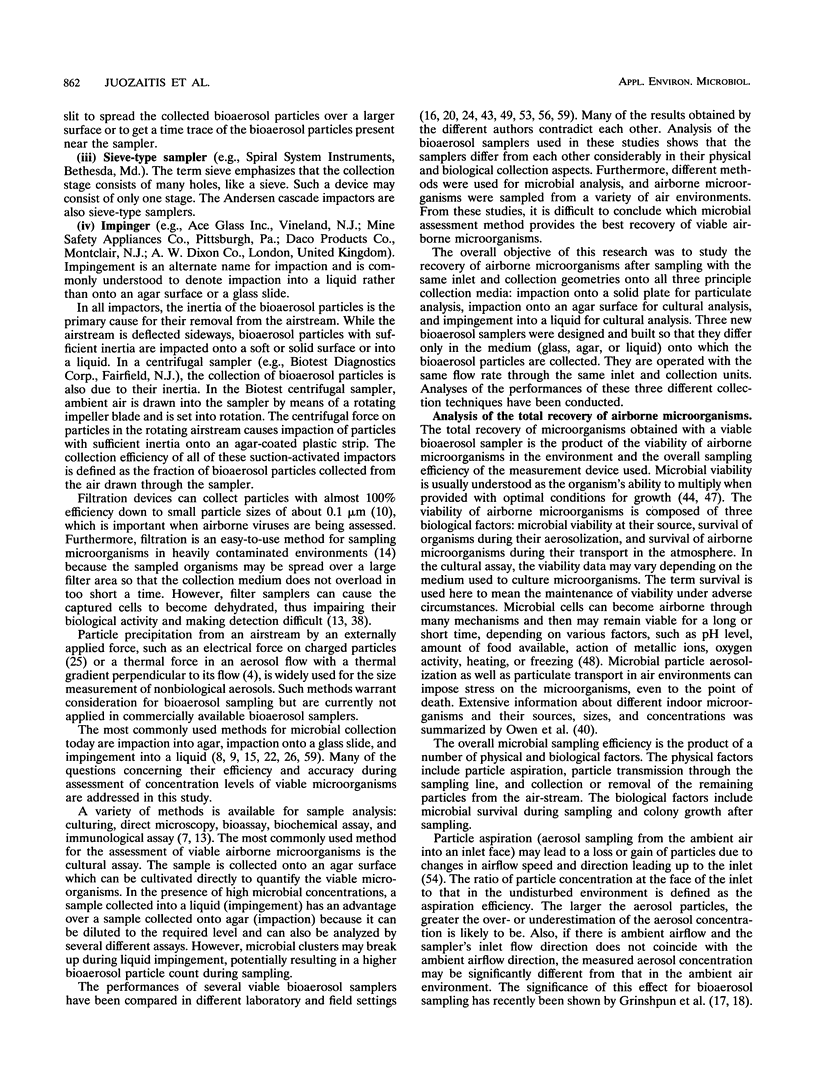
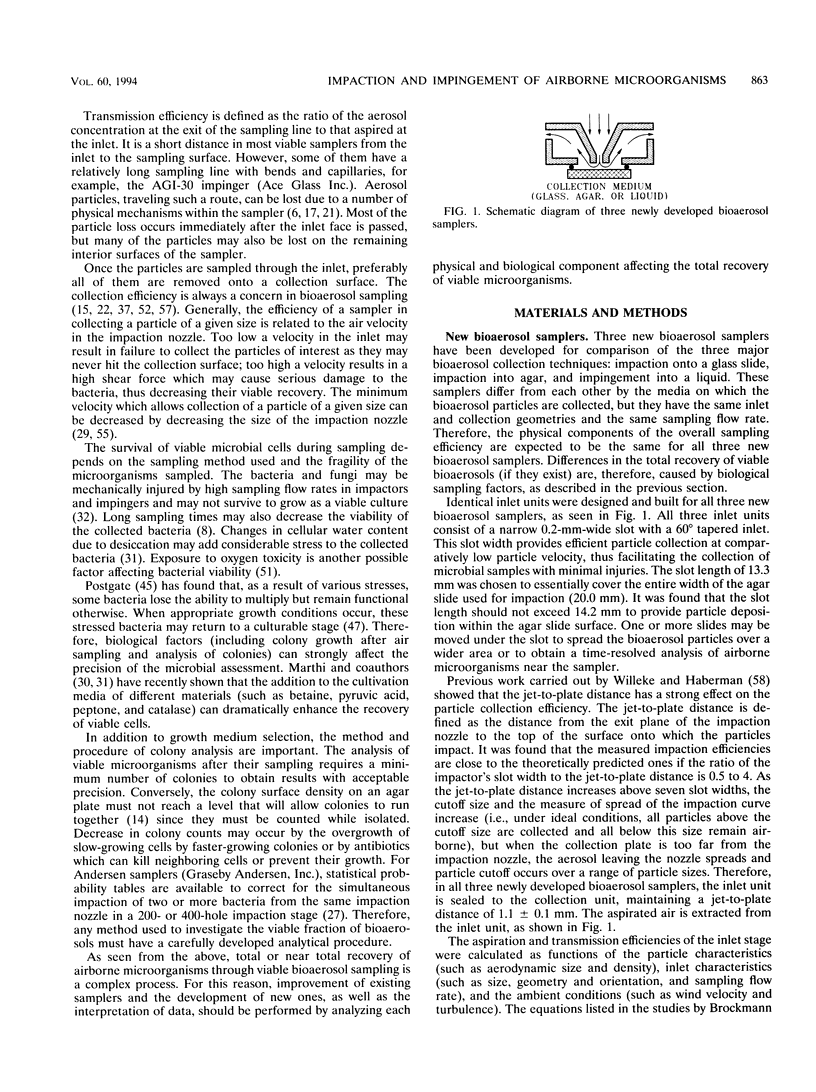
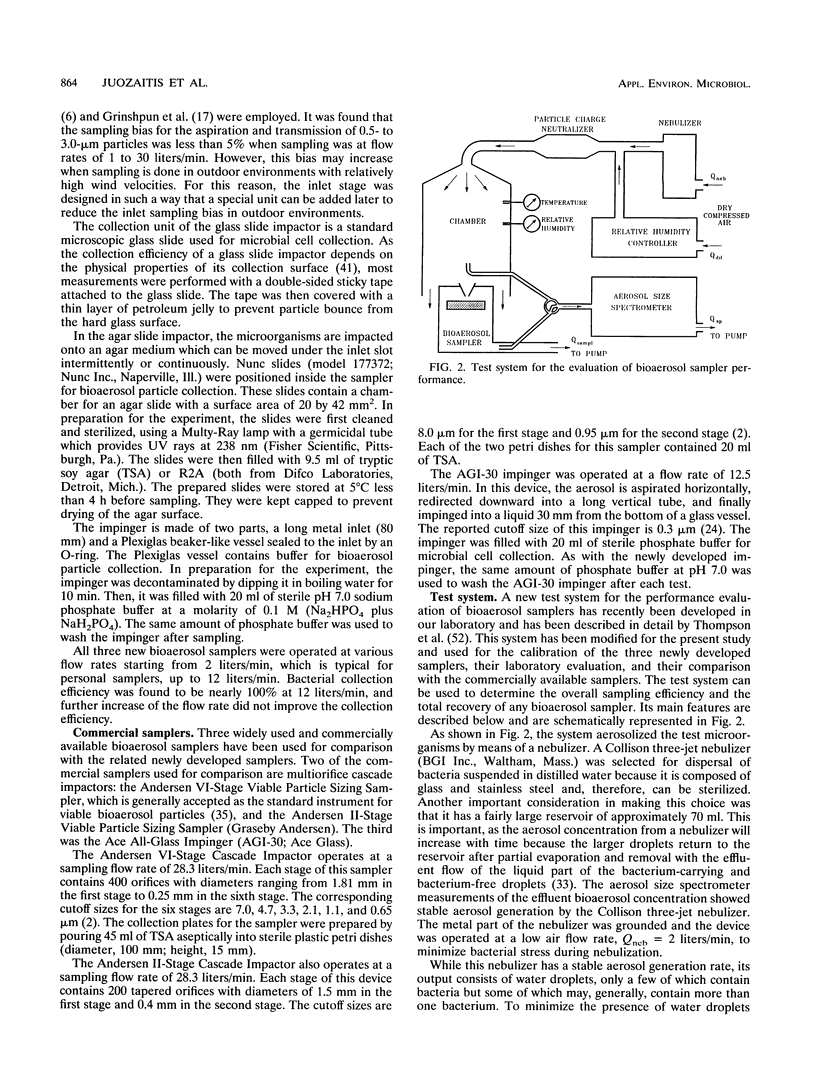
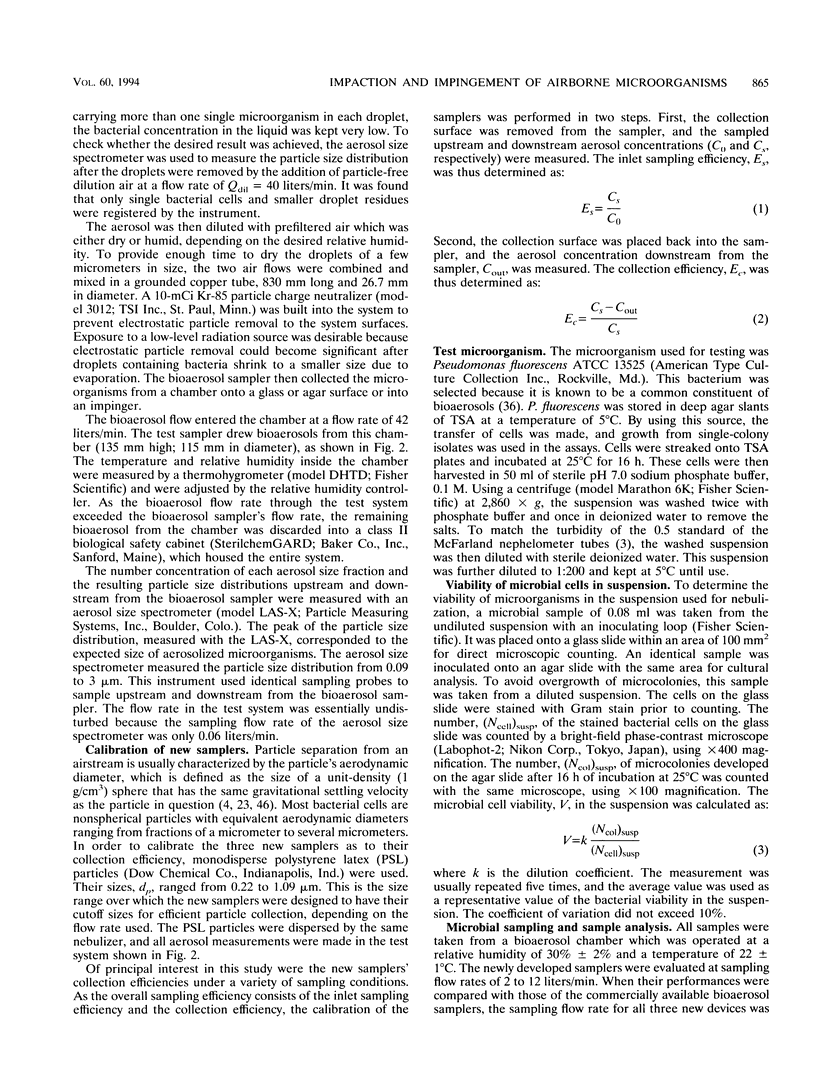
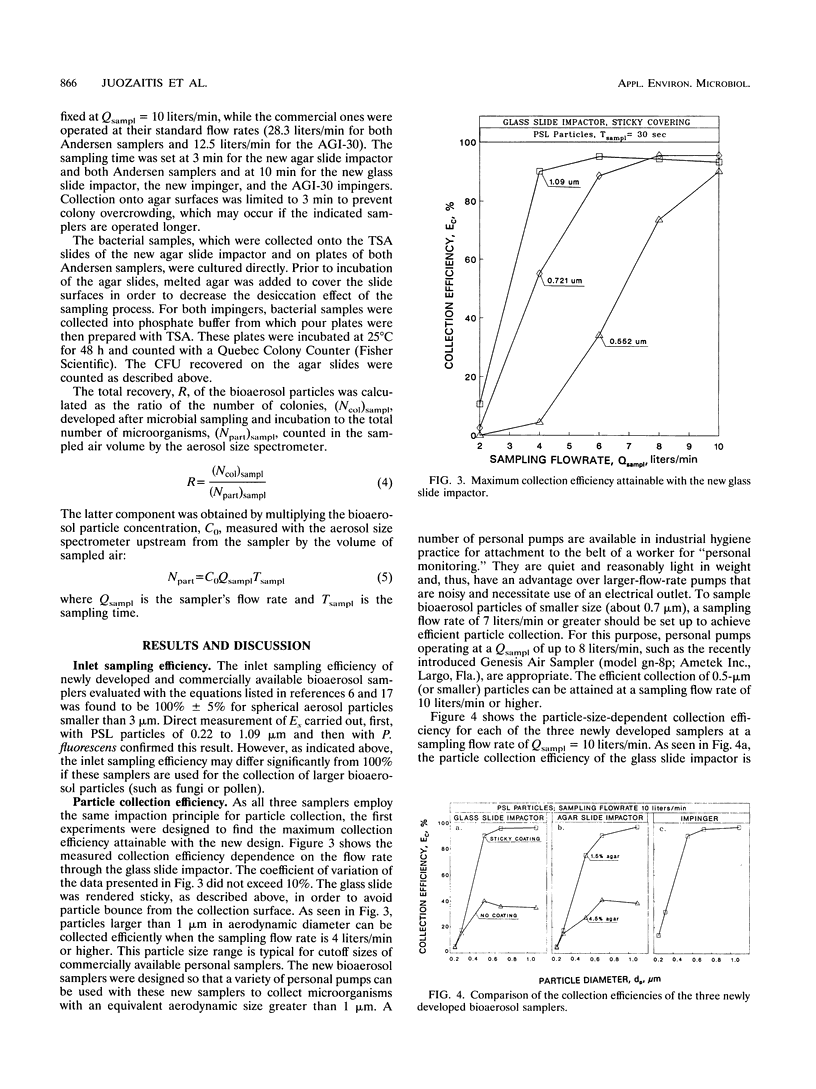
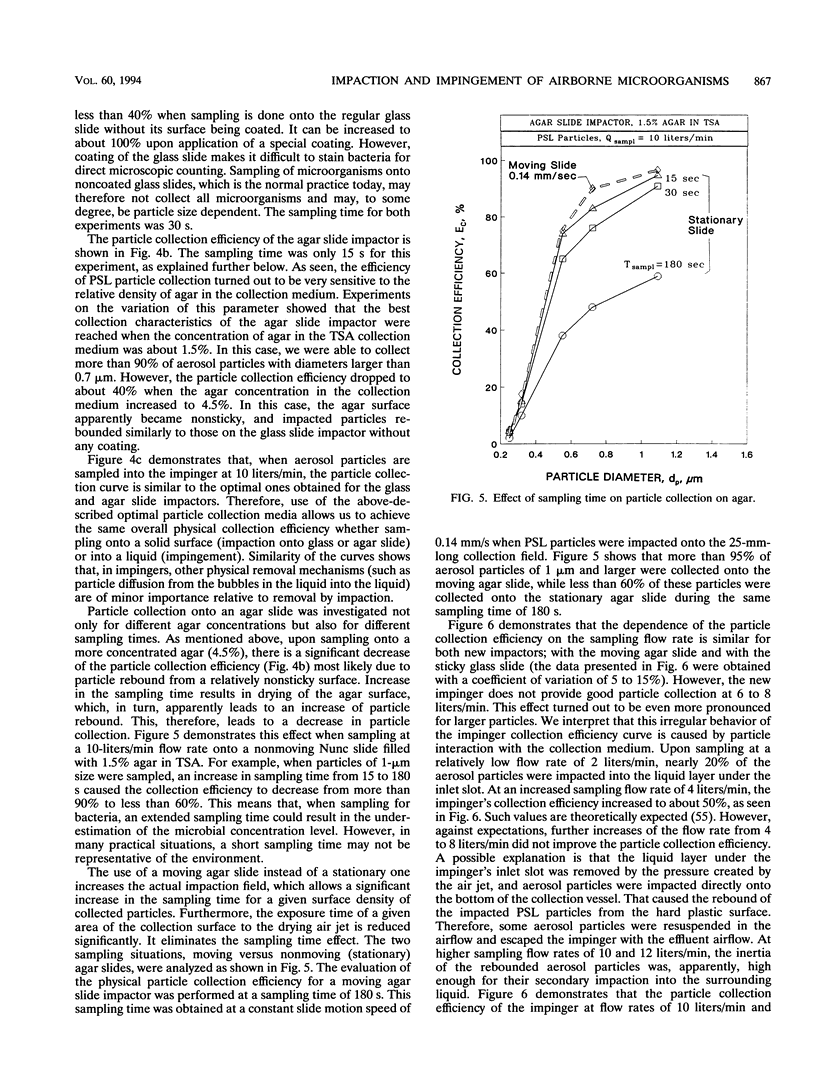
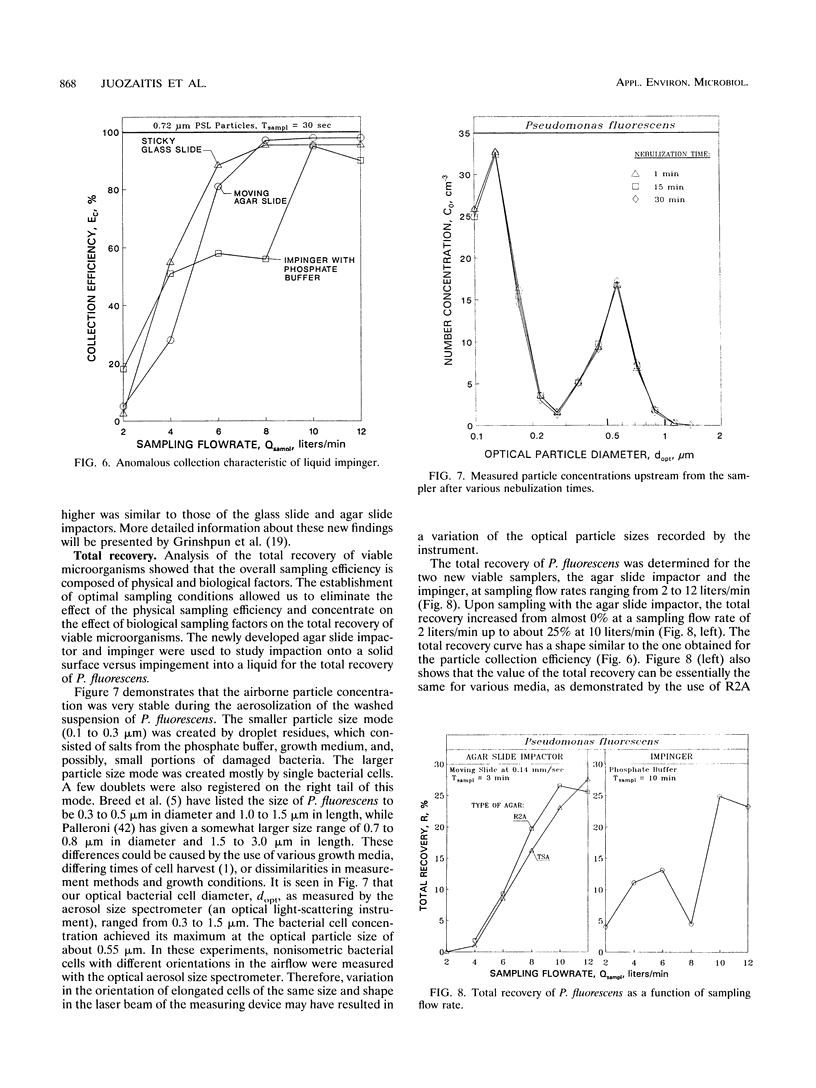
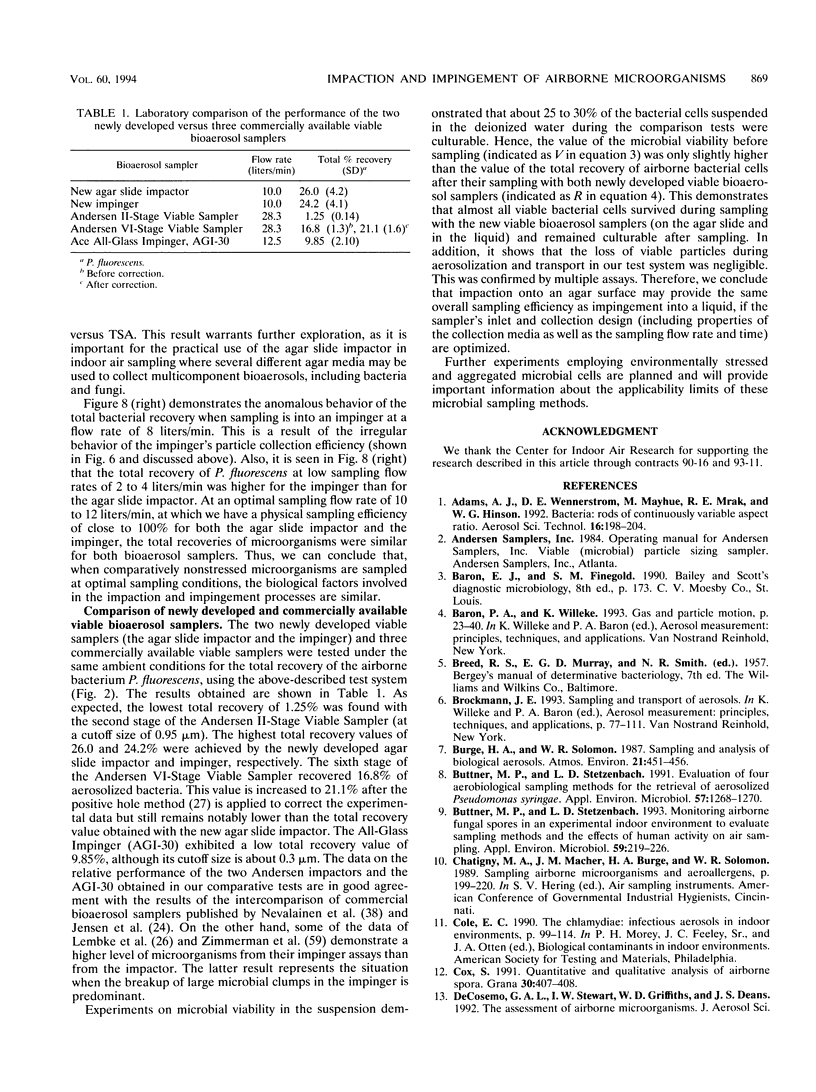
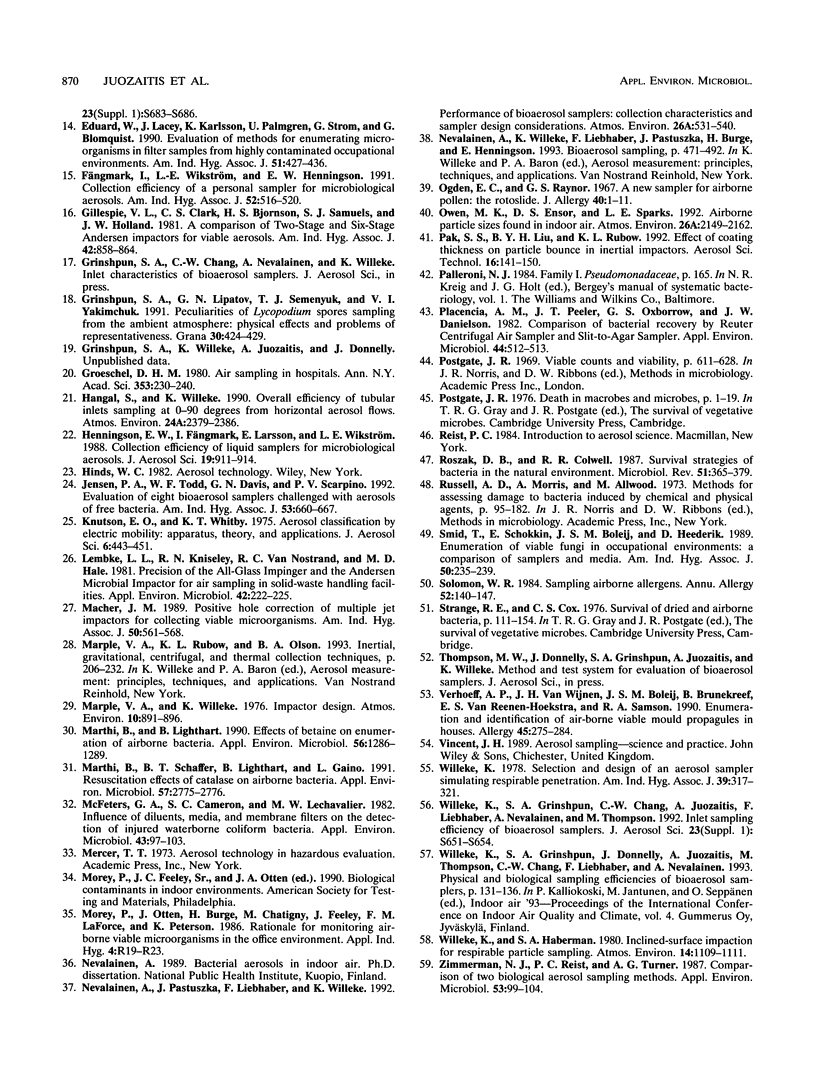
Selected References
These references are in PubMed. This may not be the complete list of references from this article.
- Buttner M. P., Stetzenbach L. D. Evaluation of Four Aerobiological Sampling Methods for the Retrieval of Aerosolized Pseudomonas syringae. Appl Environ Microbiol. 1991 Apr;57(4):1268–1270. doi: 10.1128/aem.57.4.1268-1270.1991. [DOI] [PMC free article] [PubMed] [Google Scholar]
- Buttner M. P., Stetzenbach L. D. Monitoring airborne fungal spores in an experimental indoor environment to evaluate sampling methods and the effects of human activity on air sampling. Appl Environ Microbiol. 1993 Jan;59(1):219–226. doi: 10.1128/aem.59.1.219-226.1993. [DOI] [PMC free article] [PubMed] [Google Scholar]
- Eduard W., Lacey J., Karlsson K., Palmgren U., Ström G., Blomquist G. Evaluation of methods for enumerating microorganisms in filter samples from highly contaminated occupational environments. Am Ind Hyg Assoc J. 1990 Aug;51(8):427–436. doi: 10.1080/15298669091369899. [DOI] [PubMed] [Google Scholar]
- Fängmark I., Wikström L. E., Henningson E. W. Collection efficiency of a personal sampler for microbiological aerosols. Am Ind Hyg Assoc J. 1991 Dec;52(12):516–520. doi: 10.1080/15298669191365144. [DOI] [PubMed] [Google Scholar]
- Gröschel D. H. Air sampling in hospitals. Ann N Y Acad Sci. 1980;353:230–240. doi: 10.1111/j.1749-6632.1980.tb18926.x. [DOI] [PubMed] [Google Scholar]
- Jensen P. A., Todd W. F., Davis G. N., Scarpino P. V. Evaluation of eight bioaerosol samplers challenged with aerosols of free bacteria. Am Ind Hyg Assoc J. 1992 Oct;53(10):660–667. doi: 10.1080/15298669291360319. [DOI] [PubMed] [Google Scholar]
- Lembke L. L., Kniseley R. N., van Nostrand R. C., Hale M. D. Precision of the all-glass impinger and the andersen microbial impactor for air sampling in solid-waste handling facilities. Appl Environ Microbiol. 1981 Aug;42(2):222–225. doi: 10.1128/aem.42.2.222-225.1981. [DOI] [PMC free article] [PubMed] [Google Scholar]
- Macher J. M. Positive-hole correction of multiple-jet impactors for collecting viable microorganisms. Am Ind Hyg Assoc J. 1989 Nov;50(11):561–568. doi: 10.1080/15298668991375164. [DOI] [PubMed] [Google Scholar]
- Marthi B., Lighthart B. Effects of betaine on enumeration of airborne bacteria. Appl Environ Microbiol. 1990 May;56(5):1286–1289. doi: 10.1128/aem.56.5.1286-1289.1990. [DOI] [PMC free article] [PubMed] [Google Scholar]
- Marthi B., Shaffer B. T., Lighthart B., Ganio L. Resuscitation effects of catalase on airborne bacteria. Appl Environ Microbiol. 1991 Sep;57(9):2775–2776. doi: 10.1128/aem.57.9.2775-2776.1991. [DOI] [PMC free article] [PubMed] [Google Scholar]
- McFeters G. A., Cameron S. C., LeChevallier M. W. Influence of diluents, media, and membrane filters on detection fo injured waterborne coliform bacteria. Appl Environ Microbiol. 1982 Jan;43(1):97–103. doi: 10.1128/aem.43.1.97-103.1982. [DOI] [PMC free article] [PubMed] [Google Scholar]
- Ogden E. C., Raynor G. S. A new sampler for airborne pollen: the rotoslide. J Allergy. 1967 Jul;40(1):1–11. doi: 10.1016/0021-8707(67)90053-6. [DOI] [PubMed] [Google Scholar]
- Placencia A. M., Peeler J. T., Oxborrow G. S., Danielson J. W. Comparison of bacterial recovery by Reuter centrifugal air sampler and slit-to-agar sampler. Appl Environ Microbiol. 1982 Aug;44(2):512–513. doi: 10.1128/aem.44.2.512-513.1982. [DOI] [PMC free article] [PubMed] [Google Scholar]
- Roszak D. B., Colwell R. R. Survival strategies of bacteria in the natural environment. Microbiol Rev. 1987 Sep;51(3):365–379. doi: 10.1128/mr.51.3.365-379.1987. [DOI] [PMC free article] [PubMed] [Google Scholar]
- Smid T., Schokkin E., Boleij J. S., Heederik D. Enumeration of viable fungi in occupational environments: a comparison of samplers and media. Am Ind Hyg Assoc J. 1989 May;50(5):235–239. doi: 10.1080/15298668991374570. [DOI] [PubMed] [Google Scholar]
- Solomon W. R. Sampling airborne allergens. Ann Allergy. 1984 Mar;52(3 Pt 1):140–149. [PubMed] [Google Scholar]
- Verhoeff A. P., van Wijnen J. H., Boleij J. S., Brunekreef B., van Reenen-Hoekstra E. S., Samson R. A. Enumeration and identification of airborne viable mould propagules in houses. A field comparison of selected techniques. Allergy. 1990 May;45(4):275–284. doi: 10.1111/j.1398-9995.1990.tb00496.x. [DOI] [PubMed] [Google Scholar]
- Willeke K. Selection and design of an aerosol sampler simulating respirable penetration. Am Ind Hyg Assoc J. 1978 Apr;39(4):317–321. doi: 10.1080/0002889778507763. [DOI] [PubMed] [Google Scholar]
- Zimmerman N. J., Reist P. C., Turner A. G. Comparison of two biological aerosol sampling methods. Appl Environ Microbiol. 1987 Jan;53(1):99–104. doi: 10.1128/aem.53.1.99-104.1987. [DOI] [PMC free article] [PubMed] [Google Scholar]


